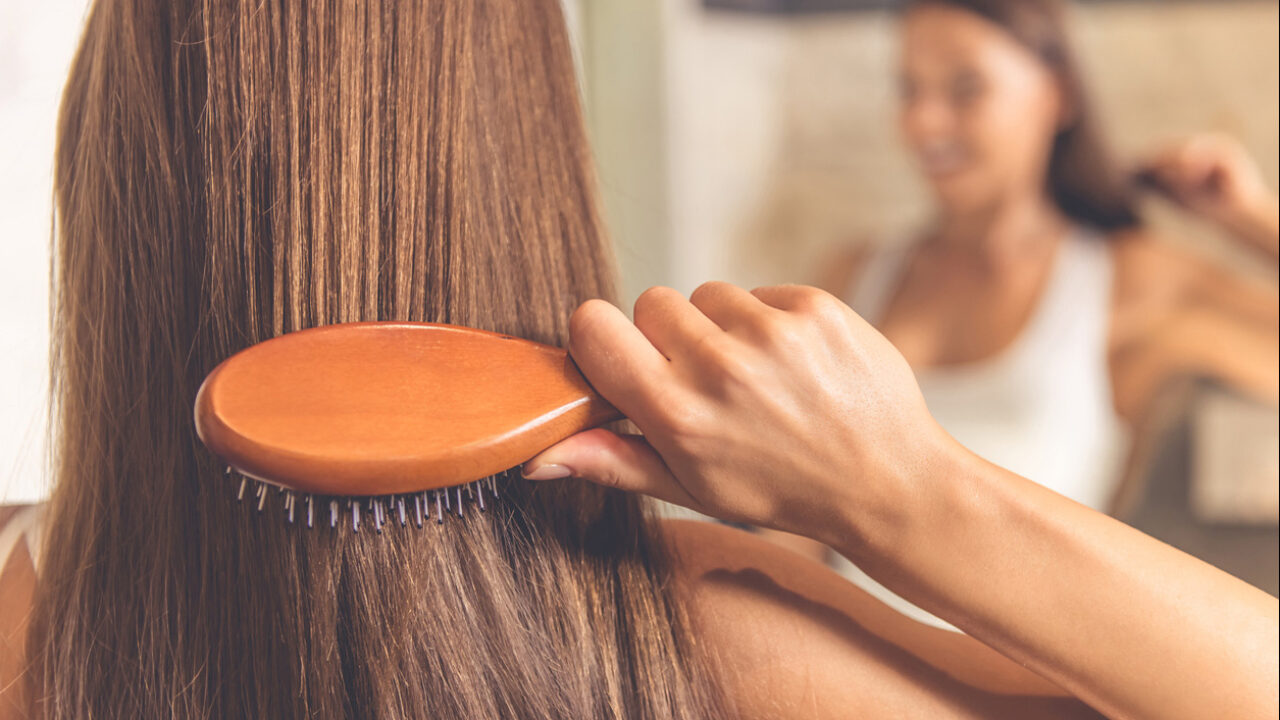
It’s worth knowing how to clean a hairbrush because it doesn’t just help your hair in the short term, it can improve its health and length in the long term
We cleanse our faces with balms and foams, we clean our bodies with shower gel, we wash our hair with shampoo yet can you tell us the last time you cleaned your hairbrush? Or even wondered how to clean a hairbrush?
The fact that you’ve clicked on this link suggests it’s either been a while, or you’ve never done it. Beyond just good hygiene, cleaning a hairbrush can make a big difference to the condition and look of your hair.
According to a study from the University of Arizona, the average hairbrush harbours almost 3,500 colonies of bacteria per square inch.
That is because your daily brushing creates a buildup of dead skin cells transferred from your scalp to the brush. Not only is this a bit gross, but you’re effectively rubbing these cells, dead skin and bacteria through your freshly washed hair. If you have greasy hair naturally, this can make things particularly worse.
“Using a dirty hairbrush allows germs and fungi to infect your scalp, produce head acne, dandruff, scalp folliculitis and other scalp disorders,” according to the hair experts at WeThrift.
So how do you wash a hairbrush? And is it enough to simply remove the hair stuck to the bristles? Here are two methods. If you haven’t cleaned your hairbrush in a while (or ever) we recommend starting with the deep cleanse.
You can also check to see if you’re using the best hairbrush for your hair type in our best hairbrush guide.
FURTHER READING: How to clean makeup brushes and choose a makeup brush cleaner
“Like all beauty tools, hairbrushes get dirty with repeated use, especially if you’re regularly using styling and heat products on your hair,” said the hair experts at WeThrift. “Cleaning your hairbrush more frequently will get rid of dirt, product buildup and oils from the scalp that sit on the brush bristles over time.
“Skipping regular cleaning also leads to germs and bacteria being passed onto your hair and scalp from the residue on the brush. This can leave your hair looking not only greasy but makes detangling that much harder too. After all, the last thing you want is all that dirt and deposits back onto your freshly washed hair.”
To clean your hairbrush you’ll need:
You can substitute the baby shampoo for apple cider vinegar. It’s a great cleanser and is one of the key ingredients in Hairstory New Wash – our absolute favourite SLS-free shampoo.
In place of Dettol, you can use baking soda. It’s not quite as effective but is natural and less harsh.
FURTHER READING: Hairstory New Wash review
If you also want to disinfect your brushes, fill up the sink or bowl with hot water again and this time put in two capfuls of Dettol or similar.
Leave to soak for an hour and then rinse the brushes and leave to dry again.
“You can use diluted alcohol or vinegar to clean your brush, it will kill any bacteria or germs. Just add it to your water and shampoo mixture and leave to soak,” added WeThrift.
FURTHER READING: How to clean beauty blenders
Once you’ve deep cleaned your hairbrush, you can get away with the quick clean method to keep the brush in great condition.
Either way, you should be looking to wash your hair brush with warm water and mild shampoo weekly, where possible. If you’ve got long hair, we recommend you do this more often.
You’ll need:
We then recommend spraying your brushes with a sanitiser spray. We use the Pro Hygiene Collection (£16) spray and it works for both our makeup brushes and our hairbrushes.
If you have natural hair, which tends to be thicker and curlier, it may take a little more effort to get rid of the hair and products from your brushes and we recommend that you try to wash your combs and brushes as much as you can.
The video below talks through the same processes as above but from a natural hair perspective.


